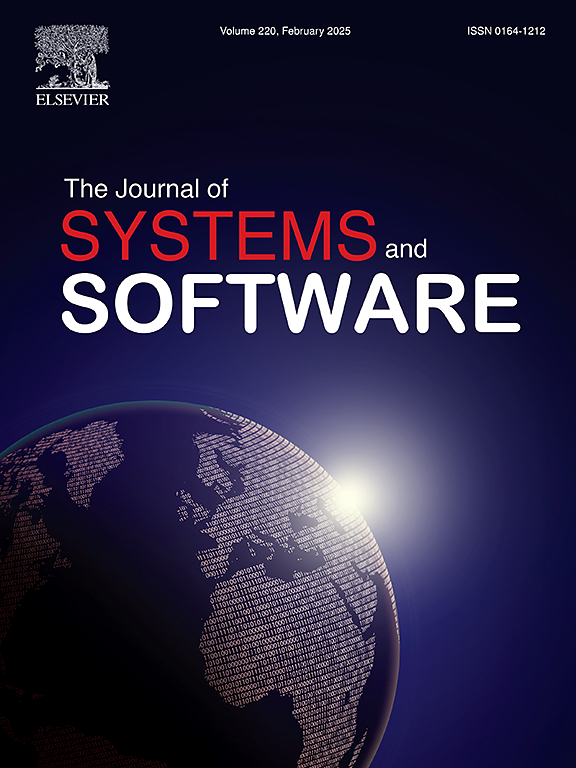Reference architectures as boundary objects in the co-engineering of system properties: An empirical study
IF 3.7
2区 计算机科学
Q1 COMPUTER SCIENCE, SOFTWARE ENGINEERING
引用次数: 0
Abstract
Context:
The complexity of large-scale, software-intensive systems demands collaborative efforts across engineering disciplines to assure that all system properties are correctly implemented. Effective communication and knowledge sharing among the involved engineering are critical for fostering this collaboration. As a result, engineering artifacts, such as reference architectures, play a key role as boundary objects—shared objects used by different communities to reach a mutual understanding.
Objective:
This study aimed to understand how engineer should utilize reference architectures as boundary objects, and explored the challenges in using them in the co-engineering of system properties.
Methodology and Methods:
Semi-structured interviews were conducted with 10 experts from two engineering disciplines focusing on system properties of particular importance to contemporary large-scale software-intensive systems development. To analyze the data, an abductive thematic analysis approach was used.
Results:
Reference architectures can be used as promoters of synergy, change, and learning by the engineers involved in the co-engineering of system properties. However, related challenges with regard to organizational contexts were identified. These findings underscore the need for further investigations into the relationship between the role of reference architectures, power, and organizational theory.
参考架构作为共同设计系统属性的边界对象:实证研究
背景:大规模软件密集型系统的复杂性要求各工程学科通力合作,以确保正确实现所有系统属性。相关工程之间的有效沟通和知识共享对于促进这种协作至关重要。因此,参考架构等工程工件作为边界对象--不同群体为达成相互理解而使用的共享对象--发挥着关键作用。研究目的:本研究旨在了解工程师应如何利用参考架构作为边界对象,并探讨在系统属性的协同工程中使用参考架构所面临的挑战。研究方法:研究人员对来自两个工程学科的 10 名专家进行了半结构化访谈,重点关注对当代大规模软件密集型系统开发尤为重要的系统属性。结果:参考架构可作为协同、变革和学习的促进因素,供参与系统属性协同工程的工程师使用。然而,也发现了与组织环境相关的挑战。这些发现强调了进一步研究参考架构的作用、权力和组织理论之间关系的必要性。
本文章由计算机程序翻译,如有差异,请以英文原文为准。
求助全文
约1分钟内获得全文
求助全文
来源期刊

Journal of Systems and Software
工程技术-计算机:理论方法
CiteScore
8.60
自引率
5.70%
发文量
193
审稿时长
16 weeks
期刊介绍:
The Journal of Systems and Software publishes papers covering all aspects of software engineering and related hardware-software-systems issues. All articles should include a validation of the idea presented, e.g. through case studies, experiments, or systematic comparisons with other approaches already in practice. Topics of interest include, but are not limited to:
•Methods and tools for, and empirical studies on, software requirements, design, architecture, verification and validation, maintenance and evolution
•Agile, model-driven, service-oriented, open source and global software development
•Approaches for mobile, multiprocessing, real-time, distributed, cloud-based, dependable and virtualized systems
•Human factors and management concerns of software development
•Data management and big data issues of software systems
•Metrics and evaluation, data mining of software development resources
•Business and economic aspects of software development processes
The journal welcomes state-of-the-art surveys and reports of practical experience for all of these topics.
 求助内容:
求助内容: 应助结果提醒方式:
应助结果提醒方式:


